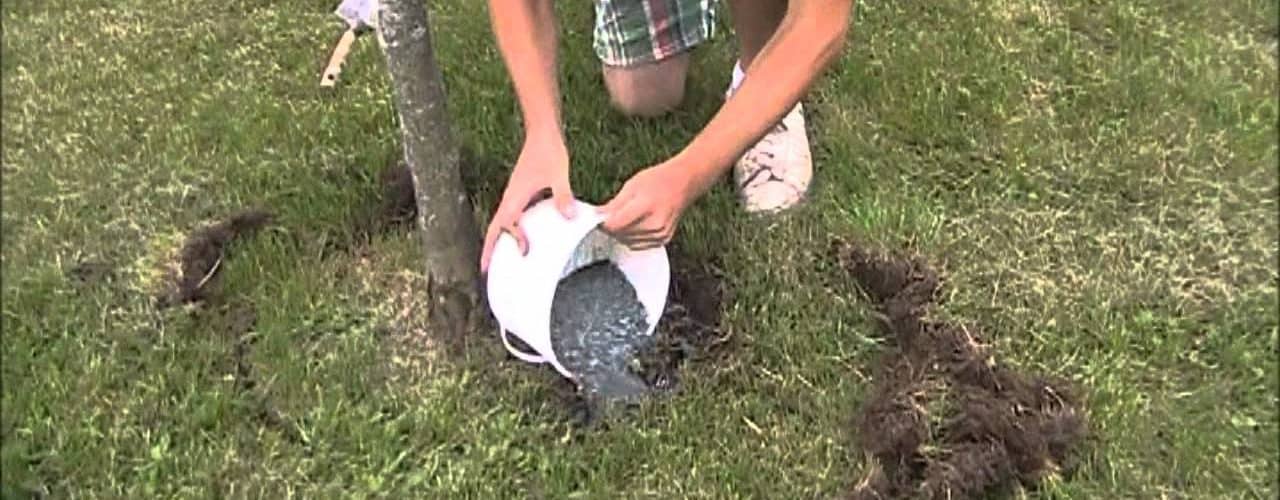Trees are the giants of the plant world. Their towering heights and interestingly varied structures make them appealing additions to landscaping projects and lawns alike. A tree provides shade, an interesting focal point, or aesthetic symmetry to a large space. Properly caring for a tree can ensure its thriving survival for decades. Fertilizing a tree may be an important factor in proper tree maintenance.
Contents
What is Fertilizer?
Contrary to the beliefs popularly held by the amateur gardener, fertilizer is not food for plants. All plants create their own source of energy through a process known as photosynthesis. By absorbing nutrients from the ground and combining these nutrients with air, water and sunlight, plants are able to synthesize an energy-rich sugar product. Most of a plant’s nutrients come from preexisting elements in the soil. However, if the soil around a tree is lacking crucial elements, a tree’s health may be affected. Fertilizers are nutrient supplements. Just as humans often take a daily multivitamin to supplement a daily diet, many trees require fertilizers to provide them with the right balance of elements for successful growth.
Fertilizer Misconceptions
Concerning trees, the use of fertilizers should not necessarily be an annual course of action. If a tree is provided with too much additional nutrients, several problems could occur. Trees are slow-growing plants. As the root base of a tree expands to absorb more nutrients, the tree extends its foliage creating leaves that will be exposed to more sunlight. There is a careful and intentional balance between these two types of growth. Some fertilizers may encourage a tree to produce limbs that are too long to be supported by the root system. If a tree grows too quickly, it is more likely to be damaged by wind or cold. Moderate, steady growth is ideal for almost all trees.
Fertilizer Components
Fertilizers come in two basic types: Synthetic and Natural. Synthetic fertilizers are produced in a chemical process. Natural fertilizers are usually an animal byproduct of some kind; for example, dried blood, powdered fish products or manure can be used to provide balanced nutritional supplementation. When selecting a fertilizer, consumers may notice a series of three numbers separated by hyphens on the packaging. These three numbers correspond to the percentage of three crucial elements to plant health: Nitrogen, Phosphorous and Potassium. Nitrogen is responsible for plant growth. Phosphorous encourages the production of fruit, flowers and seeds. Potassium is used for the regulation of water, and is necessary for plants in areas that are prone to drought.
When To Fertilize
Trees should be fertilized in late Spring or early Fall. Generally, fertilizer should be applied to the base of a tree immediately after it is planted. After that, a tree generally responds well to an application of fertilizer every two or three years. Annual fertilization is typically unhealthy for most trees. If consumers are unsure of which fertilizer concentration should be used, a low-concentration, equally balanced fertilizer is a safe choice. Look for fertilizers labeled 10-10-10. These products contain ten percent of the three basic nutrients for plant growth.
Testing Soil
The easiest way to determine what nutrients your tree may be lacking is to get the soil around the tree professionally tested. Collect a soil sample using stainless steel tools, so as not to contaminate the sample, and test it for nutrient concentrations. Nitrogen is the element most commonly absent from soil. Nitrogen can be easily added to soil in powdered, liquid, or stake form to promote healthy growth.
References:
North Carolina State University’s Guide to Fertilizing Trees and Shrubs
TreeHelp.com How To Fertilize



